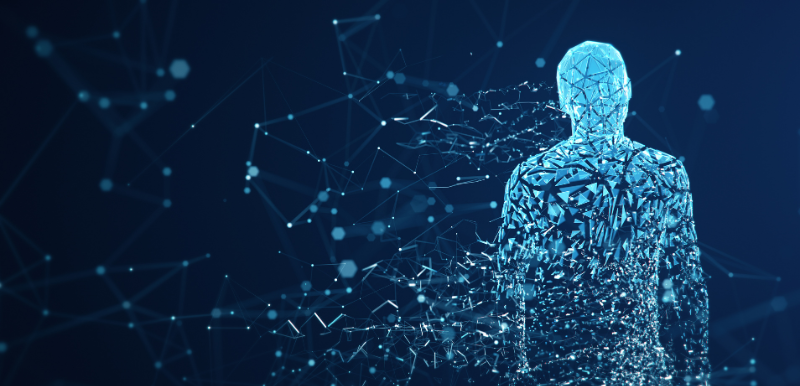Humane Technology: The Future of Employee Performance Management

Image Source: DKosig from Getty Images | Canva
Employee performance management has long been regarded as a key player in the territory of talent development and organizational excellence. However, in our modern world, one characterized by relentless digital transformation, the way we approach employee performance management is undergoing a profound shift. The infusion of technology into this pivotal aspect of human resources has ushered in a new era filled with opportunities and challenges alike. This article aims to examine the future of employee performance management, underscoring the imperative to strike a harmonious balance between technology-driven solutions and a resolute human-centered approach. Over the course of this discussion, we will explore three central themes that encapsulate the evolution of performance management in our digital age.
Technology’s Vital Role in Employee Performance Management
In the current era defined by digitization, technology is a crucial partner in optimizing performance management processes. It is obvious that the arrival of artificial intelligence (AI) has changed the business environment. AI tools offer immediate performance tracking, data analysis, and the ability to provide real-time insights—which were previously not visible. For example, machine learning (ML) procedures can discover complex trends within employee performance data, which supports management to take proactive actions that are designed to improve productivity and enhance job satisfaction. Moreover, cloud-based platforms have made performance evaluations more accessible, facilitating the maintenance of consistent and efficient performance management practices, particularly for geographically spread teams and organizations.
Technology’s role in performance management extends beyond the scope of data sifting. It also encompasses the streamlining of administrative tasks, which fosters transparent communication channels, and the accessibility of performance data. Ultimately, this results in a shift towards more agile and approachable performance management processes. Keeping in mind that technology assists in automating routine tasks, HR professionals will be able to allocate more time and resources towards the all-important human elements of performance management, such as coaching and mentorship. In essence, technology is the engine that drives employee performance management in the digital age, allowing organizations to harness the full spectrum of new opportunities that come with it.
Read More >> Big Data: The Next Frontier of Performance Management
Maintaining a Human-Centered Approach
While technology assumes a pivotal role, it is paramount to recognize that it should serve as an enabler and not a replacement for the human element in employee performance management. Employee engagement and motivation remain deeply rooted in personal interactions and the provision of constructive feedback. HR professionals must thus prioritize these core aspects, leveraging technology to facilitate, rather than displace, these crucial facets of the employee performance management process.
In a world increasingly characterized by virtual communication and remote work, the importance of face-to-face interactions cannot be overstated. Employees derive immense value from the opportunity to engage with their managers and colleagues in real-time. Constructive feedback, delivered through personalized conversations, holds the potential to drive substantial performance improvements. A technological revolution should not signify the obsolescence of these personal connections but should instead facilitate their continuation in unique ways.
Mentorship and coaching, too, remain essentially human activities. While AI can provide valuable insights, there is no substitute for the guidance and wisdom that experienced professionals can convey to their peers. Employee performance management should encompass these essential human elements, leveraging technology to create an environment where mentorship and coaching thrive alongside data-driven insights.
Transparency and Fairness Through Data
When leveraging technology, organizations can establish objective performance benchmarks and metrics that reduce the influence of biases in evaluations. These data-driven insights serve as a foundation upon which fair and consistent decisions can be made regarding promotions, compensation, and developmental opportunities.
Moreover, the utilization of technology allows organizations to share performance data with employees, which fosters a culture of transparency, accountability, and self-improvement. Once employees understand the criteria by which they are evaluated and witness the fairness with which these evaluations are conducted, it creates a more productive workplace.
However, organizations should exercise caution when using data, especially where ethical considerations are involved, such as protecting employee privacy and ensuring the responsible handling of sensitive data. Moreover, they must also avoid the pitfalls of algorithmic bias, making it a priority to continue assessing and fine-tuning their algorithms to mitigate unfairness.
Read More >> The Next Generation HR is a Data Driven HR
The Right Equilibrium
The synergy between technology and human expertise will not only drive individual and organizational performance, but also ensure fairness, transparency, and employee satisfaction. By navigating this growing model, organizations that strike the right equilibrium between technology and humanity will not just adapt but thrive in the digital age. The future of employee performance management should be an appropriate balance of technology and humanity—a path that leads to greater prosperity and progress for individuals and organizations alike.
**********
About the Author
This article is written by Chadia Abou Ghazale, a seasoned banking professional with 24 years of experience and who excels in budgeting, sales performance management, data analysis, and resource planning. Beyond banking, she is a dedicated reader of self-development topics and a passionate networker. Chadia believes that life’s purpose is the pursuit of knowledge. Her extensive expertise and unwavering enthusiasm are a dynamic combination, driving success in her career and enriching her life’s adventurous journey.
Editor’s Note: This article was originally published on October 23, 2023 and last updated on September 17, 2024.


